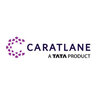Software Developer Trainee
100+ Software Developer Trainee Interview Questions and Answers

Asked in LeewayHertz Technologies

Q. Hash Table Constructors string reverse in python
The question covers topics related to hash tables, constructors, and string reversal in Python.
Hash tables are data structures that allow for efficient lookup, insertion, and deletion of key-value pairs.
Constructors are special methods that are called when an object is created and are used to initialize its attributes.
In Python, strings can be reversed using slicing or the built-in reversed() function.

Asked in HGS

Q. 1.What is Class? 2.What is Object?syntax 3.What is OOP's?Concepts 4.SQL question like Create,update,delete the table and the it's data add data to table and other questions.
Class is a blueprint for creating objects in object-oriented programming. Objects are instances of classes.
Class is a template for creating objects with attributes and methods.
Objects are instances of classes that have their own unique data and behavior.
OOP's concepts include encapsulation, inheritance, polymorphism, and abstraction.
SQL commands like CREATE TABLE, UPDATE, DELETE are used to manipulate database tables and data.

Asked in Cludo Technology Consultants

Q. Tell me about the plot etc.
The plot is about a group of software developers who embark on a mission to create a groundbreaking software application.
The story revolves around the challenges faced by the developers during the software development process.
It explores the dynamics within the team and their interactions with clients and stakeholders.
The plot may include elements of innovation, competition, and problem-solving.
Examples: The developers may face tight deadlines, encounter technical obstacles, ...read more

Asked in GlobalLogic

Q. What are the tech stacks used in the project?
The tech stacks used in the project include Java, Spring Boot, Angular, and MySQL.
Java
Spring Boot
Angular
MySQL

Asked in Shell Recharge Solutions

Q. What are the basic concepts of Object-Oriented Programming (OOP)?
Object-Oriented Programming (OOP) is a programming paradigm based on the concept of objects, which can contain data and methods.
Encapsulation: Bundling data and methods that operate on the data within one unit (e.g., a class). Example: A 'Car' class with properties like 'color' and methods like 'drive()'.
Abstraction: Hiding complex implementation details and showing only the essential features of the object. Example: A 'BankAccount' class that exposes methods like 'deposit()'...read more

Asked in Ypsilon IT Solutions

Q. What are the core building blocks of Android?
The core building blocks of Android are activities, services, content providers, and broadcast receivers.
Activities: Represent the UI and handle user interactions.
Services: Perform background tasks that don't require a UI.
Content Providers: Manage shared data between apps.
Broadcast Receivers: Respond to system-wide events or app-specific broadcasts.
Software Developer Trainee Jobs




Asked in Huron

Q. What are the types of inheritance?
There are 5 types of inheritance: single, multiple, multilevel, hierarchical, and hybrid.
Single inheritance: A class inherits from a single base class.
Multiple inheritance: A class inherits from multiple base classes.
Multilevel inheritance: A class inherits from a derived class, which in turn inherits from another class.
Hierarchical inheritance: Multiple classes inherit from a single base class.
Hybrid inheritance: Combination of multiple and multilevel inheritance.

Asked in TCS

Q. What is the difference between method overloading and method overriding?
Method overloading and overriding are two concepts in object-oriented programming that allow methods to have multiple implementations.
Method overloading is when multiple methods have the same name but different parameters.
Method overriding is when a subclass provides a specific implementation of a method that is already provided by its parent class.
Overloading is resolved at compile-time while overriding is resolved at runtime.
Overloading is used to provide different ways of ...read more
Share interview questions and help millions of jobseekers 🌟


Asked in HyScaler

Q. Explain the difference between == and === operators in JavaScript.
True. == compares only values, while === compares both values and data types.
== is used for value comparison, while === is used for both value and data type comparison
Example: 5 == '5' will return true, but 5 === '5' will return false
Example: 5 === 5 will return true, as both value and data type are the same

Asked in WatchGuard Technologies

Q. Write code to reverse an array in a linked list.
Reverses the order of elements in an array stored in a linked list.
Traverse the linked list and store the elements in an array
Reverse the array using two pointers
Update the linked list with the reversed array

Asked in LTIMindtree

Q. What is the difference between a metal and a metalloid?
Metals are conductive, malleable elements, while metalloids have properties of both metals and nonmetals.
Metals are typically shiny and good conductors of heat and electricity.
Metalloids have intermediate properties, such as semi-conductivity.
Examples of metals include iron, copper, and aluminum.
Examples of metalloids include silicon, germanium, and arsenic.
Metals are usually solid at room temperature, while metalloids can be brittle.

Asked in Infrrd

Q. Check string is palindrome Reverse number Check if it is anagram Oops related concept were asked
Palindrome and anagram check for strings and reverse number implementation.
To check if a string is palindrome, compare the string with its reverse.
To check if two strings are anagram, sort both strings and compare them.
To reverse a number, use modulo operator and divide the number by 10.
Oops concepts like inheritance, polymorphism, encapsulation, and abstraction were asked.

Asked in Haptiq Lab

Q. Write pseudo code for a circular queue.
Pseudo code for circular queue
A circular queue is a data structure that follows the FIFO (First-In-First-Out) principle.
It uses an array to store the elements and two pointers, front and rear, to keep track of the queue.
When the rear pointer reaches the end of the array, it wraps around to the beginning, creating a circular behavior.
To enqueue an element, check if the queue is full. If not, increment the rear pointer and add the element at that index.
To dequeue an element, ch...read more

Asked in Redian Software

Q. Are you aware of frameworks?
Yes, frameworks are pre-written code libraries that provide a foundation for developing software applications.
Frameworks help developers by providing reusable code for common functionalities.
They can speed up development time and ensure consistency in coding practices.
Examples of frameworks include React.js for front-end web development and Spring for Java applications.

Asked in Haptiq Lab

Q. concatenation of linked lists
Concatenation of linked lists is the process of combining two or more linked lists into a single linked list.
Create a new linked list to store the concatenated result.
Traverse the first linked list and add each node to the new linked list.
Traverse the second linked list and add each node to the new linked list.
The last node of the first linked list should point to the head of the second linked list.
Return the head of the new linked list.

Asked in Intellect Design Arena

Q. What is the process for connecting Java with SQL?
Connecting Java with SQL involves using JDBC to execute SQL queries and manage database connections.
1. Load the JDBC driver: Class.forName('com.mysql.cj.jdbc.Driver');
2. Establish a connection: Connection conn = DriverManager.getConnection(url, user, password);
3. Create a statement: Statement stmt = conn.createStatement();
4. Execute a query: ResultSet rs = stmt.executeQuery('SELECT * FROM table_name');
5. Process the results: while (rs.next()) { System.out.println(rs.getString...read more

Asked in Triad Software

Q. Write a program to determine if a number is a prime number.
A prime number is a natural number greater than 1 that cannot be formed by multiplying two smaller natural numbers.
A prime number has exactly two distinct positive divisors: 1 and itself.
Examples of prime numbers: 2, 3, 5, 7, 11, 13.
The number 1 is not prime because it has only one divisor.
The number 4 is not prime because it can be divided by 1, 2, and 4.

Asked in Loumus Data Systems

Q. What is mvc.how both are different from each other
MVC stands for Model-View-Controller. It is a software design pattern used for developing web applications.
MVC separates an application into three interconnected components: Model, View, and Controller.
Model represents the data and business logic of the application.
View represents the user interface of the application.
Controller handles the user input and updates the model and view accordingly.
MVP stands for Model-View-Presenter. It is a variation of MVC pattern.
In MVP, Prese...read more

Asked in Cloud Analogy

Q. Write a program to find the duplicate words in a String?
This program identifies and lists duplicate words in a given string input.
Split the string into words using space as a delimiter. Example: 'hello world hello' becomes ['hello', 'world', 'hello'].
Use a dictionary to count occurrences of each word. Example: {'hello': 2, 'world': 1}.
Identify words with a count greater than 1 as duplicates. Example: Duplicate words are ['hello'].
Return the list of duplicate words.

Asked in Webstep Technologies

Q. How can you handle asynchronous operations?
Asynchronous operations can be handled using callbacks, promises, and async/await for better code readability and flow.
Use callbacks to execute code after an asynchronous operation completes. Example: fetch data from an API and process it in a callback.
Utilize promises to handle asynchronous operations, allowing chaining of operations. Example: fetch().then(response => response.json()).then(data => console.log(data));
Implement async/await for a more synchronous-like flow. Exa...read more

Asked in Webstep Technologies

Q. What do you know about React lifecycle methods?
React lifecycle methods are hooks that allow developers to run code at specific points in a component's lifecycle.
Lifecycle methods are divided into three phases: Mounting, Updating, and Unmounting.
Mounting methods include: componentDidMount(), componentWillMount(), and constructor().
Updating methods include: componentDidUpdate(), shouldComponentUpdate(), and getDerivedStateFromProps().
Unmounting method: componentWillUnmount() is used for cleanup tasks.
Example: componentDidMo...read more

Asked in Redian Software

Q. How will you make a site responsive?
To make a site responsive, use media queries, flexible grids, and fluid images.
Use CSS media queries to adjust layout based on screen size
Implement flexible grids using CSS frameworks like Bootstrap or Flexbox
Use fluid images that resize based on viewport size
Test responsiveness on various devices using browser developer tools

Asked in Ypsilon IT Solutions

Q. Explain the Android application architecture.
Android application architecture consists of various layers that facilitate app development, including UI, framework, and system services.
1. **Application Layer**: Contains the app's UI and user interaction components, such as Activities and Fragments.
2. **Framework Layer**: Provides essential services like Activity management, resource management, and content providers.
3. **Libraries Layer**: Includes Android libraries (e.g., Retrofit for networking, Room for database) that ...read more

Asked in Cognizant

Q. What are the different types of joins in SQL?
SQL joins combine rows from two or more tables based on related columns, enabling complex queries and data retrieval.
INNER JOIN: Returns records with matching values in both tables. Example: SELECT * FROM A INNER JOIN B ON A.id = B.id;
LEFT JOIN (or LEFT OUTER JOIN): Returns all records from the left table and matched records from the right table. Example: SELECT * FROM A LEFT JOIN B ON A.id = B.id;
RIGHT JOIN (or RIGHT OUTER JOIN): Returns all records from the right table and ...read more
Asked in Cloud Analogy Crm Specialist

Q. What are collections, and what are the different types of collections?
Collections are data structures that store groups of related objects, enabling efficient data management and manipulation.
1. Arrays: Fixed-size collections of elements of the same type, e.g., int[] numbers = {1, 2, 3};
2. Lists: Dynamic collections that can grow or shrink, e.g., List<String> names = new ArrayList<>();
3. Sets: Collections that store unique elements, e.g., Set<Integer> uniqueNumbers = new HashSet<>();
4. Maps: Key-value pairs for efficient data retrieval, e.g., M...read more
Asked in Cloud Analogy Crm Specialist

Q. What are the OOPS concepts with practical examples?
OOP concepts include Encapsulation, Inheritance, Polymorphism, and Abstraction, essential for software development.
Encapsulation: Bundling data and methods in a class. Example: A 'Car' class with properties like 'speed' and methods like 'accelerate()'.
Inheritance: Deriving new classes from existing ones. Example: 'ElectricCar' inherits from 'Car', adding features like 'batteryCapacity'.
Polymorphism: Using a single interface to represent different underlying forms. Example: A ...read more

Asked in Cyber Infrastructure

Q. Explain about your projects and array shorting with using in build function
I have worked on various projects, including web applications and algorithms, showcasing my skills in software development.
Project 1: A task management web application using React and Node.js, allowing users to create, update, and delete tasks.
Project 2: A personal portfolio website built with HTML, CSS, and JavaScript, highlighting my skills and projects.
Array Sorting: I used the built-in sort() function in JavaScript to sort an array of strings alphabetically, e.g., ['banan...read more

Asked in TCS

Q. What is a communication network?
Communication network refers to the infrastructure and technologies used to transmit information between devices and systems.
Communication network enables devices and systems to exchange information and data.
It includes technologies such as wired and wireless networks, routers, switches, and protocols.
Examples of communication networks include the internet, LAN, WAN, Bluetooth, and cellular networks.

Asked in Trellix

Q. Implement a linked list.
Implementing a linked list involves creating nodes and managing pointers for dynamic data storage.
A linked list consists of nodes, where each node contains data and a pointer to the next node.
Example: A node can be defined as: class Node { int data; Node next; }
To insert a node, adjust the pointers: newNode.next = current.next; current.next = newNode;
Traversal involves starting from the head and following next pointers until reaching null.
Example of traversal: while (current ...read more

Asked in Loumus Data Systems

Q. What is DBMS?which db u have used
DBMS stands for Database Management System. It is a software system that allows users to define, create, maintain and control access to databases.
DBMS is used to manage and organize data in a structured manner.
It provides a way to store, retrieve and manipulate data efficiently.
Examples of DBMS include MySQL, Oracle, SQL Server, and MongoDB.
DBMS can be used in various applications such as banking, healthcare, e-commerce, and more.
Interview Questions of Similar Designations
Interview Experiences of Popular Companies





Top Interview Questions for Software Developer Trainee Related Skills

Calculate your in-hand salary
Confused about how your in-hand salary is calculated? Enter your annual salary (CTC) and get your in-hand salary


Reviews
Interviews
Salaries
Users










